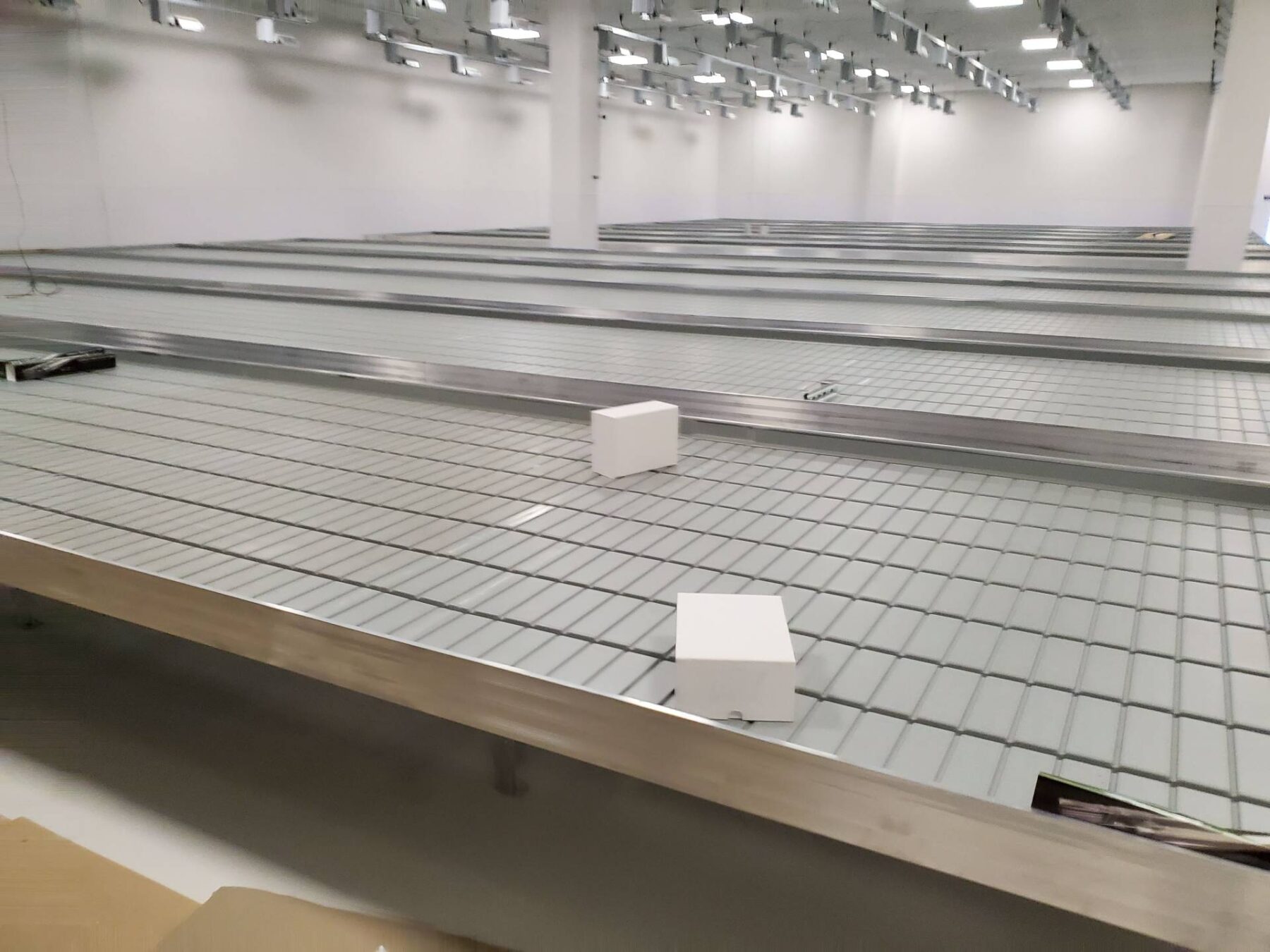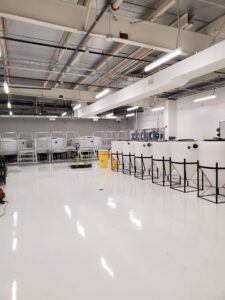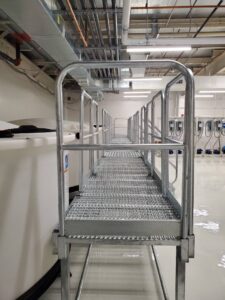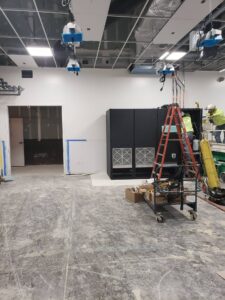
Starting a cannabis business is no easy feat. As the laws have evolved and changed, the cannabis industry has exploded, but those in charge are left with a plethora of decisions to make.
There are so many factors to take into consideration, whether it be related to funding, finding a location, licensing, or staffing, investors looking to open a cultivation facility face an uphill battle. One of the very first choices to be made is whether to build a brand-new facility, or to retrofit a building that already exists.
What is retrofitting?
Retrofitting is the process of taking an existing structure and remodeling it to fit a new purpose. Building from scratch is ideal but isn’t always possible depending on your budget, timeline, and/or local codes. If you’re looking to retrofit an existing building for a cannabis grow, read on to find out what you should consider before you begin your endeavor. These tips could potentially save you both time and money!
1. Location, Location, Location
It’s important to choose a building that’s relatively easy to convert with as few potential problems as possible. Industrial buildings are a must, as commercial buildings usually can’t handle the necessary utilities to run an entire cannabis operation. Light industrial buildings usually work better for build outs because they often have access to larger water lines and higher wattage electricity lines. Any building can be turned into a cannabis cultivation facility, but at what cost? Buildings that aren’t too specialized work well. Shipping warehouses tend to be a perfect blank slate, with lots of open space, so it’s easy to dictate what goes where.
Be thorough with your location choice. While most operations don’t want to attract too much attention, a location that is too out of the way may be more trouble than it’s worth. You’ll likely have difficulty hiring and maintaining staff, as well as accessing transportation for shipping/receiving product. Too central, and you may have issues with the city over the location.
For example, an operation in Virginia was working on an approval for a license in an old shopping mall. In the time it took to get approved for their license (13 months) the city decided to rent the shopping mall to a casino instead of the cultivation operation. Because the license was tied to the property submitted in the application, and the property was no longer available, the state voided their cultivation license.
2. Access To Utilities
The next factor to consider when it comes to retrofitting is access to utilities. How much power do you need, and how easy is it to access? Cultivation facilities are energy intensive, so making sure you have a sufficient wattage available is the first step in deciding whether not a building can meet your needs. Many commercial buildings simply aren’t equipped to power an entire cultivation operation, and the cost to upgrade can quickly push a project over budget by 7 figures.
Another downside to choosing a location that is too remote is getting all of the required utilities to the site. For example, a utility company may be unable to reach a site to set up power for years if it’s too far away from a main transmission line or in an underserved community. Some companies have wasted thousands on fuel to power generators in an attempt to get their facility producing product instead of waiting for years to be hooked up to the power grid.
It’s not just electricity that must be considered, but water source and waste management as well. Many counties do not allow table runoff to go into septic systems. When connecting to a city sewer, municipalities typically require monitoring all of the water leaving the facility. Check the codes in your county, as they differ from place to place, and from waste product to waste product. Water laws are so complex that there are whole law firms dedicated to its practice, which is why equipping yourself with knowledge on the subject is imperative.
Depending on whether your operation is on the east or the west coast, different water restrictions may apply. If you don’t have the ability to hook up to city water and you require a well, all of the rules change. Some water authorities will require an agreement that entails equal use and replacement of the water from the source in question. Most areas west of the Mississippi River will require a water augmentation plan to replace any water you pull out of the ground through a well.
3. Timing of Licenses and Build
Another big risk to consider is the timing of the license, and how long it will take to get up to speed once the business has been “green-lit.” The benefit of a retrofit is some municipalities will offer incentives like tax breaks and grants for repurposing existing buildings. Working with the city/county is important to finishing your project on time and within budget.
Acquisition of licenses and design/build/retrofit must happen concurrently in order to meet difficult time line goals required by the licensing authorities, but that isn’t always possible. Approval from the licensing authority is generally controlled by legislation. Frequently a cannabis application will require you to have already committed to a site, and the application itself will be pegged to the site in question. Some states have required a property have plants growing on them 6 months from the issuance of a license.
Operating ahead of schedule can be an additional risk to your project if you’re caught without the necessary license(s) and could result in prison time and loss of license(s).
Never grow cannabis without a license from the state!
Failure to obtain a license for a particular building due to push-back from the local community could forever terminate the potential use of the space, which is why all investment in the space could be lost if you find yourself in such a situation.
Without a license, operation is simply illegal.
In the event that all goes well, finding a location, submitting an application, and then beginning your build/retrofit is the way to go. In this case, you are still looking at a 12-18 month timeline, so other risks still abound before you can begin operation. Having good people involved and using clear communication as a team can make a huge difference.
4. Staffing
When all is said and done, a well-trained staff is what keeps a good cannabis operation running. Keep in mind if your location is too remote, maintaining staff may prove difficult. It’s one thing for your staff to have reliable transportation, but another to ask them to drive somewhere extremely out of the way for work on a regular basis, especially if you’re not lending them a company vehicle to do so or paying them enough to justify the commute.
If employees feel under-appreciated and/or underpaid, their work will likely reflect this, and your product will suffer accordingly. Preemptive calculations for a staff budget will help you decide how many staff you can hire. Too few employees, and they’ll likely be unhappy with being overworked. Too many, and multiple complications may arise including pay, scheduling, and low work ethic. Offering benefits like insurance, paid time off and sponsoring activities for your staff to enjoy will create more long-term reliable employees who want the business to succeed as much as ownership.
Having a trustworthy staff is critical; poor staffing can cost your entire operation, and it can happen overnight! Strong management and security are a must. Ensure your staff is attentive and thorough. Take care of your employees with perks and benefits, and they’ll take care of your operation! Happy employees who feel like they’re part of a team will keep the seeds you planted healthy and thriving.
Honorable Mentions:
Cleaning
Cleaning your building of choice thoroughly and routinely has the potential to save you from some costly issues. For example, an operation in Oklahoma had converted an old chicken processing plant into a grow. While the building itself made a great home for the equipment, improper cleaning procedures during construction and failure to sterilize everything before bringing plants into the building can lead to unwanted bacteria growth, resulting in product damage and loss. Take care to ensure there is no unwanted residue of any kind from the previous tenants.
Symmetry
All in all, a good rule to follow is to keep things as simple as possible. When it comes to designating spaces in a retrofit, symmetry is your friend. Spaces should be sensible and practical, with space as evenly distributed as possible. Rooms designated for flower should have the same canopy square footage available in the rooms to keep plant counts consistent from room to room. If the design is uneven, it can be harder to keep track of everything, which can result in more frequent mistakes. An uneven design requires higher effort and more staff training to ensure attention to detail.
Now You Know
Opening a cultivation facility is a monumentally huge task with so many things to consider. Now that you’ve read these tips, you’re better equipped with a greater understanding of how to run a successful retrofit project!
Written by Judith Reynolds, Cannabis Enthusiast in association with
Aaron Mullins, Green Belt Strategies Partners



